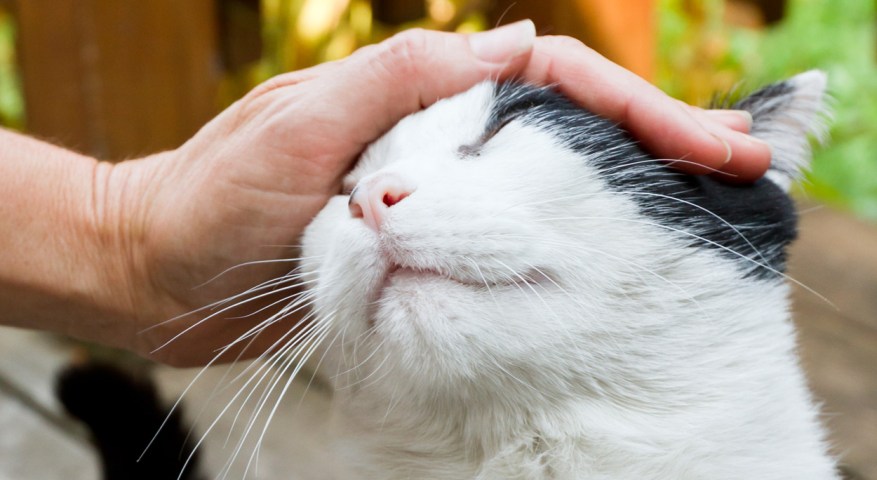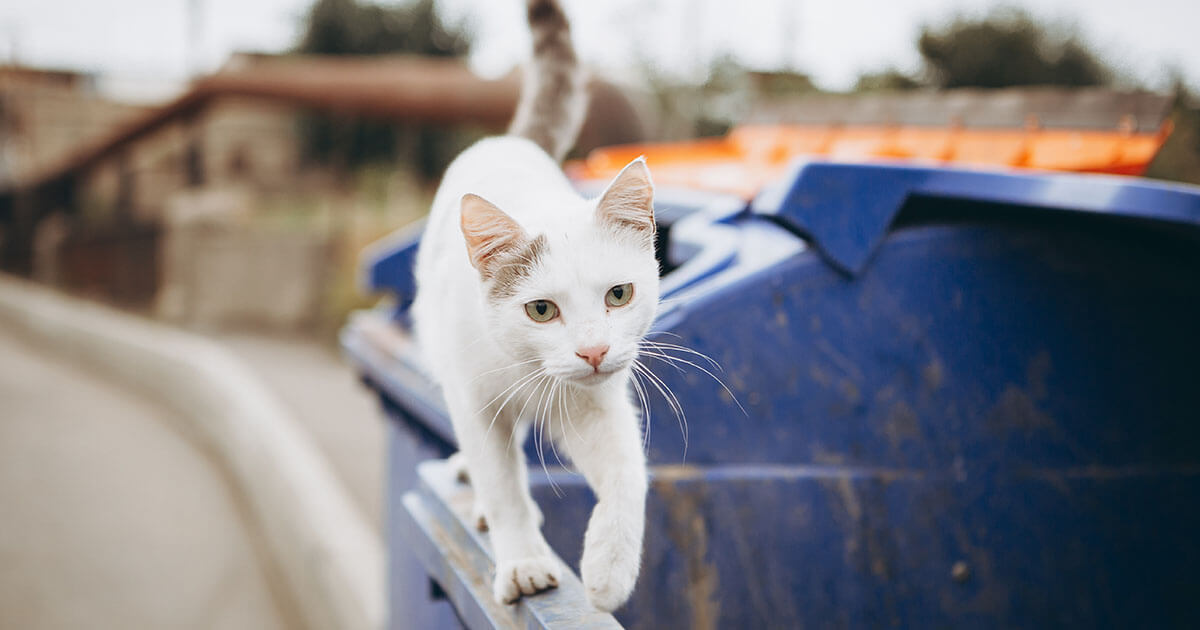Yes, stray cats can be domesticated with time, patience, and proper care. Socializing a stray cat often requires a gradual approach.
Stray cats roam our neighborhoods and alleyways, sparking a mixture of curiosity and concern among residents. These feline wanderers, often skittish and unaccustomed to human touch, live a life very different from their pampered housecat counterparts. Domesticating a stray cat is a possible endeavor, albeit a challenging one.
It requires a commitment to building trust and providing a stable, loving environment. Bearing in mind their survival-driven instincts and possible past traumas, the transformation from street-savvy survivor to a cuddly companion doesn’t happen overnight. By ensuring they have regular access to food, water, shelter, and medical care if needed, the process of turning a wary stray into a snuggly pet is all the more achievable. Interactions should be guided by respect for the cat’s pace and comfort level, encouraging a bond that benefits both the cat and the human willing to open their heart and home.
The Plight Of Stray Cats
Countless stray cats struggle to survive daily. They wander our cities and towns in search of shelter and food. These felines face harsh realities unlike their domestic counterparts. Understanding their plight is the first step towards offering help.
Life On The Streets
Stray cats lead dangerous and uncertain lives. Without homes, they endure extreme weather and constant threats from traffic and predators. Food scarcity leads to malnutrition and weakens their ability to fend off illness.
- Risk of injury from vehicles
- Threats from larger animals
- Exposure to harsh weather conditions
Health Risks For Feral Cats
Feral cats often suffer from untreated injuries and diseases. Lack of vaccinations increases the spread of ailments. Common issues include:
| Disease | Consequence |
|---|---|
| Upper respiratory infections | Difficulty breathing, discharge |
| Feline Immunodeficiency Virus | Weakens immune system |
| Rabies | Fatal if not treated |

Credit: www.amazon.com
Understanding Feral Vs. Stray Cats
Many people confuse stray cats with feral cats, but the two are very different. Strays may seem aloof at first, yet with time and patience, they often return to their domesticated state. Understanding the differences between stray and feral cats is crucial for anyone looking to help these animals.
Defining ‘feral’
A feral cat is a domestic cat that has reverted to wild behavior. Born in the streets or in the wild without human contact, these cats are not accustomed to people. Feral cats often form colonies and survive by scavenging or hunting. Domesticating a feral cat, especially adult ones, is a challenging venture.
The Stray Cat Spectrum
On the other hand, stray cats were once pets. They lost their homes or were abandoned by their owners. Unlike feral cats, strays often retain their familiarity with human behavior. With time and care, a stray cat can learn to trust and live with humans again.
| Feral Cat | Stray Cat |
|---|---|
| No human contact | Some human contact |
| Scavenges or hunts | May seek food near humans |
| Hard to domesticate | Can often be reintroduced to a home |
| Lives in colonies | Often solitary but can adapt to living with others |
Understanding each cat’s background and behavior is essential. This knowledge helps us create a proper approach for interacting with and potentially domesticating stray cats.
Initial Approach: Building Trust
Have you ever spotted a stray cat and wondered if it could be your next furry companion? Domesticating a stray cat begins with a crucial step: building trust. To transform a feral friend into a cuddly companion, the right approach is key. Let’s explore the initial steps needed to win over the trust of these independent creatures.
Feeding Tactics
Food is the universal language of care—and it’s your first step in communicating with a stray cat. Establish a routine by offering meals at the same time and place each day. Here are some feeding tactics:
- Start by leaving food at a safe distance.
- Stay nearby so the cat associates you with the food.
- Use tasty treats, like wet food or chicken, to create a strong attraction.
- Do not rush; let the cat come to you when it feels safe. Trust builds with every snack!
Patience And Presence
Time and patience are your best friends in gaining a stray cat’s trust. Follow these steps for a smoother process:
- Spend time near the cat every day, without forcing interaction.
- Allow the cat to observe you, getting used to your presence.
- Be patient; trust grows on the cat’s timeline, not yours.
- Talk in a gentle voice to let the cat become familiar with your sound.
- Limit sudden movements to avoid scaring the cat away.
Remember, trust doesn’t happen overnight. With consistent effort and a heart full of patience, the bond will form.

Credit: mrfrs.org
Creating A Safe Environment
Turning a stray cat into a beloved family pet begins with offering a secure and nurturing space. To earn their trust, a proper environment is key. Here are tools for transforming a stray’s life.
Shelter Considerations
First impressions are crucial. Prepare a cozy area for your new furry friend. This space must be warm, dry, and quiet. It should shield from noise and weather. Here’s how to set it up:
- Choose an insulated spot that’s safe from the elements.
- Include a comfy bed with blankets for snuggling.
- Place the shelter away from loud areas to reduce stress.
Balancing Isolation And Socialization
A new environment can be intimidating. Give your stray time to adjust without pressure. Here’s the ideal mix:
| Time Alone | Time With You |
|---|---|
| Allow exploration of the new space. | Start with short, gentle interactions. |
| Ensure they have quiet moments. | Increase bonding time gradually. |
Socializing a stray is a balance. Observe their signals and respond with patience. With care, a stray can become a home-loving cat.
Health Concerns And Veterinary Care
When welcoming a stray cat into your home, health and wellness become top priorities. Stray cats may carry hidden health concerns. Professional veterinary care is crucial to transition a stray cat to a safe domestic life. Let’s discuss how to start their health care journey.
Initial Health Assessment
An initial health check helps identify any immediate medical needs or concerns. This assessment typically includes:
- Physical Examination: Check for signs of injury or illness.
- Feline AIDS and Leukemia Testing: Essential tests for common diseases in strays.
- Parasite Control: Treatment for fleas, ticks, and worms.
- Dental Check: Assess oral health and treat any issues.
- Nutritional Evaluation: Ensure the cat’s diet meets its needs.
Vaccinations And Spaying/neutering
Vaccinations protect against life-threatening diseases. Spaying or neutering is key for population control and health. Important vaccinations include:
| Vaccination | Purpose |
|---|---|
| Rabies | Prevents the fatal virus |
| FVRCP | Covers feline viruses |
Discuss a spay/neuter schedule with your vet to prevent unwanted litters and decrease cancer risks.
Socialization Steps For Stray Cats
Warm homes, loving humans, and cozy laps – many stray cats can enjoy this life too. With the right steps, a stray cat can become a beloved family pet. The journey involves patience, understanding, and love. Here’s how to start.
Understanding Cat Behavior
First, learn to speak ‘cat’. Watch and listen to a stray’s body language and vocalizations. Are their ears back? They might be scared. Purring? They’re starting to trust you. This knowledge is the foundation for successful socialization.
- Slow Movements: Quick actions can scare cats. Move slowly to show you’re friendly.
- Give Space: Let the cat come to you. It builds trust.
- Consistent Routine: Feed at the same time daily. Routines help cats feel safe.
Hands-on Taming Techniques
When a stray starts to trust, it’s time for hands-on taming. Patience is key here. Here are some techniques that help:
- Lure with Food: Use yummy treats to encourage closeness.
- Use a Toy: Interactive play reduces fear and builds a bond.
- Gentle Touch: Start with small pets on safe zones like the chin or back.
Transitioning To A Forever Home
Welcome to the journey of welcoming a stray cat into a loving forever home. Offering a home to a stray cat can be a highly rewarding experience. With patience and care, former strays can become beloved family pets. Let’s explore how to make this transition as smooth as possible for your new feline friend.
Adapting To Indoor Life
Introducing a stray cat to indoor life requires patience and understanding. Start by setting up a safe, quiet space, such as a spare room. This area should have all the essentials: a cozy bed, litter box, food, and water. Limit space initially to prevent overwhelming your furry newcomer.
- Gradual introduction to other areas of the home helps build confidence.
- Use feline-friendly pheromones to soothe and reduce stress.
- Interactive toys keep the cat engaged and aid in bonding.
- Regular feeding routines establish security and trust.
Long-term Care For Former Ferals
The transformation from stray to house cat doesn’t end with their physical environment. Former ferals need ongoing care to thrive in their new home.
| Health Care | Nutrition | Emotional Well-being |
|---|---|---|
|
|
|
Remember, each cat is an individual with a unique personality and history. Some may adjust quickly, while others take time. Respect your cat’s pace and offer unconditional love and support throughout their life with you.

Credit: www.amazon.com
Frequently Asked Questions For Can Stray Cat Be Domesticated
Can You Keep A Stray Cat As A Pet?
Yes, you can keep a stray cat as a pet, but first ensure it’s not owned and check for a microchip. Then visit a veterinarian for health assessments and vaccinations. Lastly, gradually introduce the cat to your home and other pets to ensure a smooth transition.
Is It Possible To Turn A Stray Cat Into A House Cat?
Yes, turning a stray cat into a house cat is possible with patience, gradual socialization, proper care, and a safe indoor environment. Regular veterinary check-ups are also essential for their health transition.
Is It Ok To Take A Stray Cat Home?
Before taking a stray cat home, ensure it isn’t lost or owned by checking for tags and scanning for a microchip. Visit a vet for a health check. Be prepared to commit long-term and provide proper care. Consider the well-being of existing pets.
Are Stray Cats Still Domesticated?
Stray cats originate from domestic breeds but live without direct human care. While feral, they retain domesticated traits, unlike completely wild species.
Conclusion
Taming a stray cat requires patience and care, but it is certainly achievable. With the right approach, these independent animals can become loving, loyal pets. Remember, every cat’s journey to domestication is unique. Embrace the challenge and you might just earn a feline friend for life.

